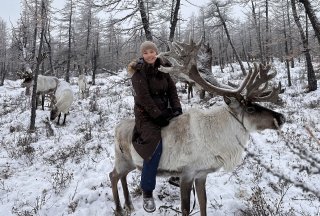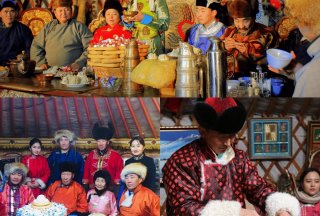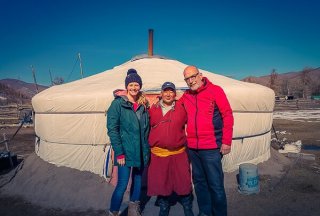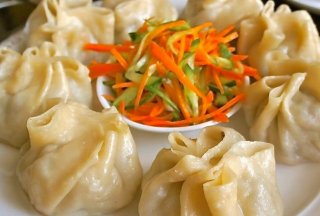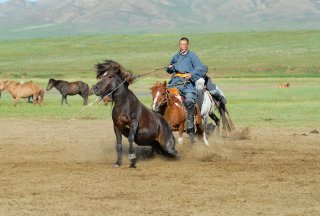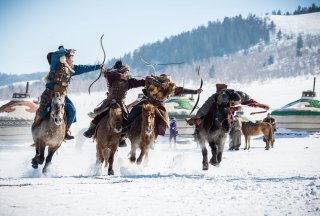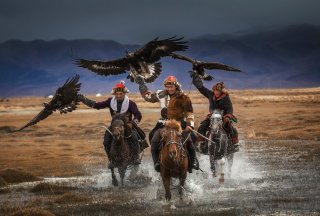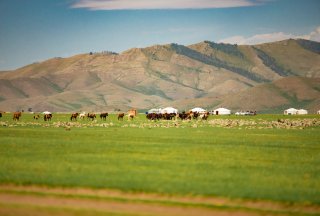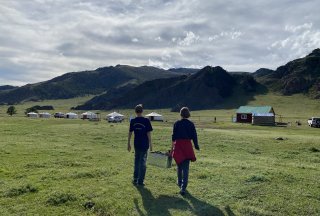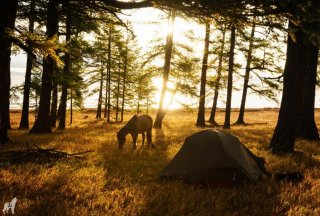The Latin name: Rangifer Tarandus
Linnaeus, 1758 Artiodactyla Cervidae Reindeer or Caribou
Status: very rare species. Globally, according to the IUCN Red List Categories and Criteria, the species listed as least concern is regionally evaluated as vulnerable.
Distribution and range: The Caribou global distribution’s southernmost boundaries lie in Khovsgol Lake. It is distributed on high mountain slopes and alpine zones (2300–3000 m). Migrate in summer from the forest belt up to alpine pastures with lichen, moss, and shrubs. Return to the forest in winter and spring; reindeer can't migrate over long distances but are always on the move. From November to March, while foraging, they cross the state border, and large herds permanently inhabit Mongolia.
Conservation and Measures: Hunting has been prohibited since 1953. Included in the Mongolian Red Book as Rare (1987) is the second edition of the Mongolian Red Book (1997) as Very Rare. Included in the Mongolian Law on Fauna as Very Rare Most of the distribution area falls under the Khoridol Saridag Strictly Protected Area and Ulaan Taiga and Khovsgol Lake National Parks.
Here are some facts about reindeer:
- The Latin name for reindeer is Rangifer tarandus.
- Both genders grow antlers.
- The antlers of an adult male fall off once a year in December, whereas the young males lose their early spring. Females will lose theirs in the summer.
- The antlers grow back each year under a fur called ‘velvet’.
- Males lock their antlers and fight for the right to mate with females.
- Reindeer can be used for their antlers, hides, meat, and milk. Most reindeer in Mongolia are domesticated by nomads, or tsaatans. But some are wild in nature.
- It is believed that domesticated reindeer have been around since the Bronze and Iron Ages.
- Male bull reindeer can measure up to 1.8 meters and weigh up to 350–450 lbs.
- Female reindeer are generally smaller, can measure up to 1.5 meters, and usually weigh 120 to 300 lbs.
- Reindeer live for 10 to 15 years and lose their teeth by the age of 13.
- Reindeer are milked 2-3 times per day, each time producing 200–250 grams of milk.
- The fat content of yak milk is 7.2%, and camel milk has 6.7% fat, while reindeer's milkfat is 14%.
- Mongolia currently has around 2400 domesticated reindeer. However, the wild reindeer population is quite tiny, with only 200 remaining.
- The Svalbard reindeer suffers from insular dwarfism.
- Northern reindeer, such as the Peary caribou, have white fur, while the southern types, such as the Woodland caribou, have darker fur.
- A reindeer’s hoof can adapt to the seasons.
- It is thought that they are the only mammals able to see ultraviolet light.
- Reindeer are herbivores and have four-chambered stomachs.
- The meat of a reindeer can be eaten, along with almost all of the internal organs.
- Reindeer are often targeted by predators, such as wolves.





